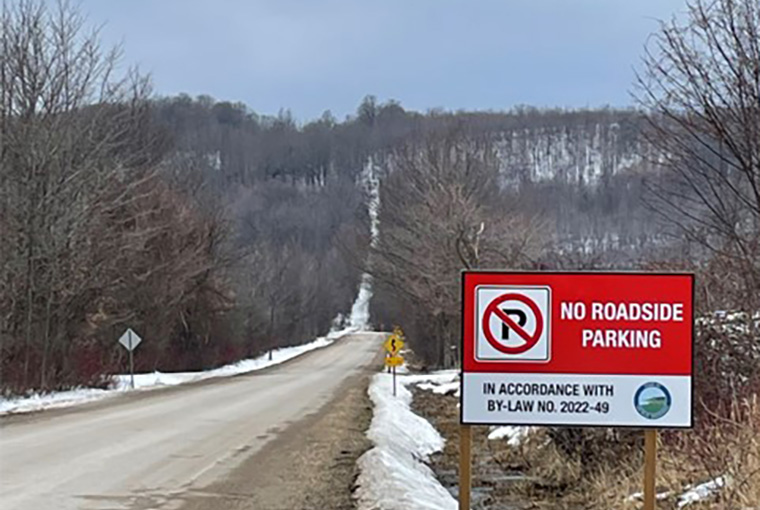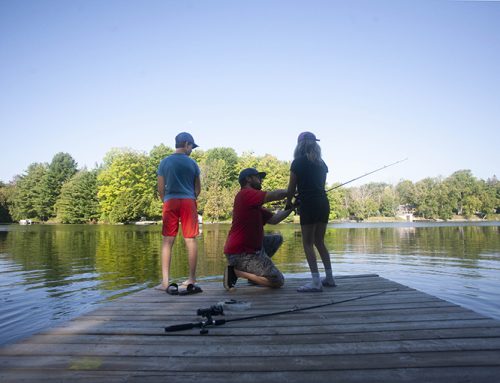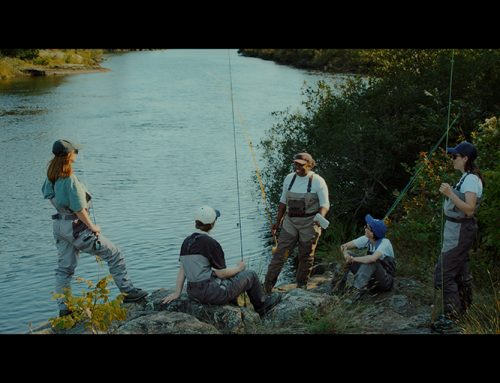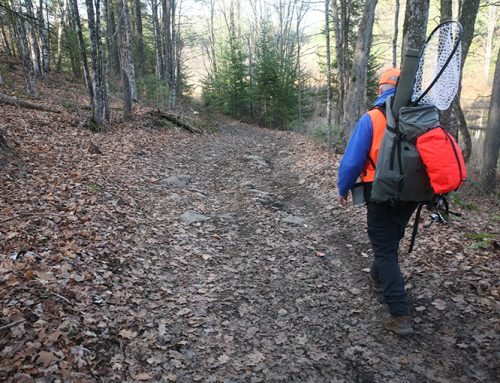
Last November, the Town of The Blue Mountains eliminated roadside parking on a stretch of the Pretty River Road that bisects the nearly 2,000-acre non-operating Pretty River Valley Provincial Park.
Tim Hendry, manager of communications and economic development for the township, noted that the town had implemented roadside parking restrictions in multiple rural areas where there is potential safety risk to road users, emergency vehicles, and pedestrians. He said the town met with Ontario Parks prior to the changes to review the restrictions and provide parking options.
“Managing parking on Pretty River Road has been an ongoing challenge for the town, both from a public safety and operational standpoint,” Hendry said. “Pretty River Road has a narrow platform and with cars parked on one side or both sides, pedestrians are forced to walk further into the centre line of the road. This poses a safety risk for both motorists and pedestrians, particularly given the curves and bends in the road.
The town and neighbouring municipalities have experienced serious accidents in similar circumstances where roadside parking is not controlled. In addition, roadside parking in this area can result in challenges for emergency vehicles when there are vehicles parked on both sides of the road with park users milling around their vehicles on the roadway preparing for a hike. When snowbanks are present and plows are active during the winter season, the risk becomes even greater in areas where roadside parking occurs.”
Surprised by restrictions
Ian Hockley, who has hunted and fished in the park for about 50 years, said most park users he knows were surprised by the parking restrictions, which makes access to the south section of the park more difficult.
He understands the safety concerns but also said that the current parking location on the east side of the park means hunters and anglers wishing to access the southern section must walk about 1.7 kilometres over challenging terrain, which could be problematic for those with health or mobility issues.
Hockley also feels the current situation is less safe as it crowds hunters who might not want to travel as far, and funnels those going to the southern portion of the park, forcing them to cross the road in question at a risky location. The park is well-used during the gun season for deer, and he wondered how safe it would be now that it is tougher for hunters to disperse.
He has contacted his MPP, Ontario Parks and others, hoping to encourage a better parking solution. “The current situation is far from ideal,” he said. “With a little bit of effort, they could come up with an alternative.”
OOD has asked Ontario Parks if there are any future parking plans for the park but did not receive a response by publication time.






Leave A Comment